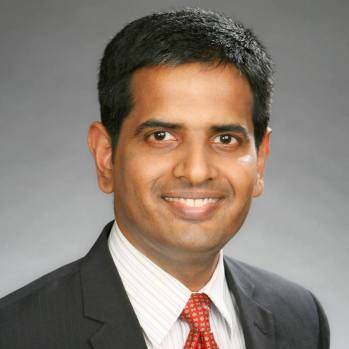
Today’s healthcare systems are nothing like their predecessors of even a decade ago, and their growth is due, in large part, to the rapid evolution of technology. In recent years, e-health—the digital services that make it possible to improve the well-being of individuals, whether to prevent, diagnose or treat illnesses—has grown exponentially, with estimates that it will reach $234.5 billion by 2023.
In order for e-health devices to demonstrate their full value, healthcare networks need to have the proper infrastructure in place to support the equipment’s operation. Of the many innovations released in recent years, a number of them are linked to the Internet of Things (IoT), which enables the interconnection of objects (physical or virtual) through a communication system (Bluetooth, Wi-Fi, 0G low-power networks, etc.). Through the IoT, devices can send critical updates regarding patient or equipment conditions to healthcare providers, empowering them to respond quickly and thoughtfully.
Here’s how the IoT is powering e-health solutions today:
1. Rapid responses even in heavily populated areas
The coronavirus crisis has underscored the challenges associated with delivering healthcare in geographies where the population density is enormous, such as slow response times in the face of emergency. With the world’s population continuing to grow—specifically, the number of people living in cities, which is forecasted to rise from 55% of all individuals to 68% in 2050—these challenges will only be exacerbated if not action is taken.
In order for patients to receive care as quickly as possible during an emergency, healthcare equipment can be installed in public spaces—for example, automatic external defibrillators can be installed to help in the event of someone experiencing sudden cardiac arrest. However, to ensure these devices prove valuable, city officials will need a system for monitoring and maintaining them—such as the IoT. Rather than have public devices unaccounted for, those equipped with the IoT can transmit information on their current location and status in real time and generate alerts in case of malfunction, so that a team can replace the non-operational defibrillator quickly.
2. Better product care along the supply chain
From the distribution of personal protective equipment, to delivery of pharmaceutical products, the coronavirus outbreak has placed immense strain on healthcare supply chains. Whereas this stress could create logistical nightmares for supply chains unprepared to process increased demands—which could result in vulnerable individuals not receiving the healthcare they need—those optimized with the IoT can ensure products are delivered on time and in expected condition.
When equipped with IoT-enabled sensors, shipping containers can be tracked along the delivery route, providing manufacturers with locational data and timing approximations for them to share with recipient healthcare institutions. While being able to provide these shipment updates enables manufacturers to manage customer expectations in general, having constant updates on package whereabouts helps solve for the more recent issue of increasing instances of mask theft. With IoT-provided insights, operators can immediately see if delivery has been jeopardized and proactively correct the situation.
Additionally, IoT sensors can be used to monitor the condition of the products being shipped, alerting supply chain operators to any environmental changes such as tilt, temperature or humidity that can be detrimental to perishable goods like pharmaceuticals. This information will be particularly critical in the distribution of coronavirus vaccines, as they will need strict temperature monitoring to ensure they don’t spoil. If the temperature of a shipping container were to fluctuate above the acceptable temperature, operators could intervene before a health crisis arose.
3. Thoughtful, comfortable care for the elderly
By 2050, it’s expected that one in four people living in Europe or North America will be over the age of 65, meaning healthcare solutions for providing elder care at scale are becoming increasingly critical. In the United States, a study revealed that 9 out of 10 seniors plan to remain in their own homes for the next 5 to 10 years, signalling that these solutions need to support quality care even when providers are a distance away.
To monitor older individuals while still granting them their independence, healthcare providers can deploy telehealth solutions backed with the IoT. IoT-enabled wearables (e.g., wristband, pendant) are designed to detect accidents such as falling and automatically send a message with the wearable’s GPS location to immediately alert caregivers. This level of insight helps reassure not only seniors who live alone in their own homes but also their friends and family that their loved ones are safe. Monitoring elderly individual’s health unobtrusively without encroaching their privacy, in the comfort of their home is even more important during the coronavirus crisis, as many are forced to spend this time isolated.
As healthcare becomes increasingly digital, healthcare providers need to ensure they have the mechanisms for keeping their innovations working properly so that care is never compromised. Whether it is used to monitor the manufacturing and delivery of medical products or in action to serve patients in need, the IoT is becoming an essential element of modern healthcare.
About Ajay Rane
Ajay Rane is the VP of Global Ecosystem Development at Sigfox, the initiator of the 0G network and the world’s leading IoT (Internet of Things) service provider. Its global network, available in 60 countries with 1 billion people covered, allows billions of devices to connect to the Internet, in a straightforward way, while consuming as little energy as possible.
